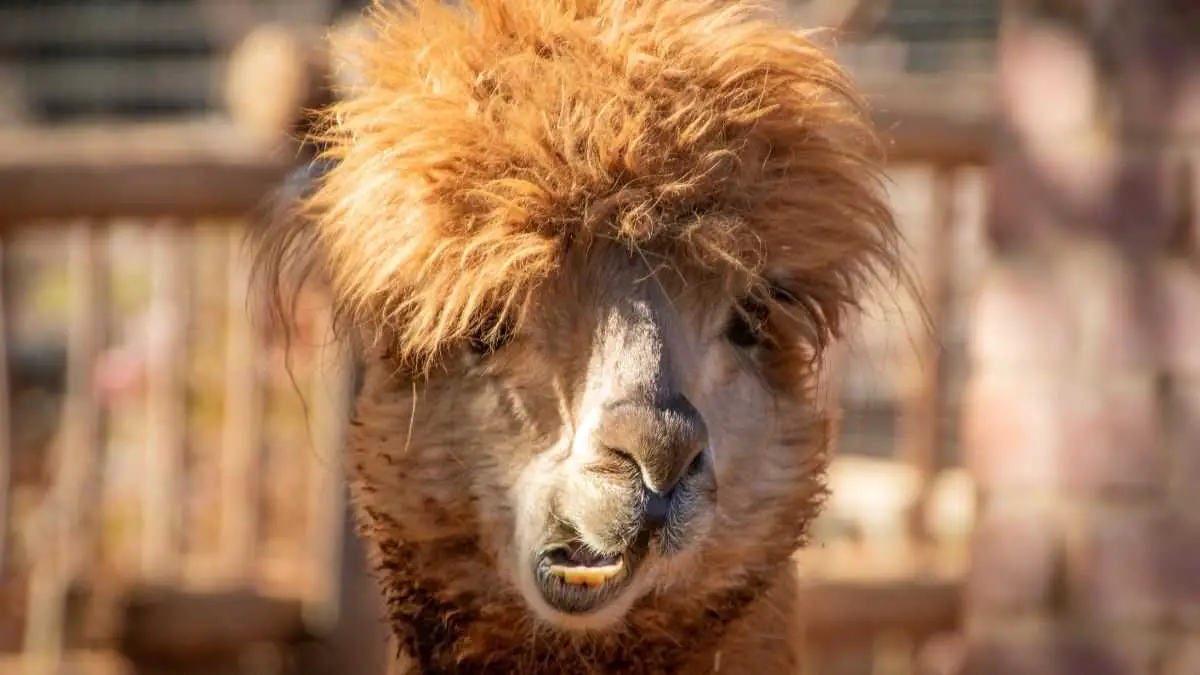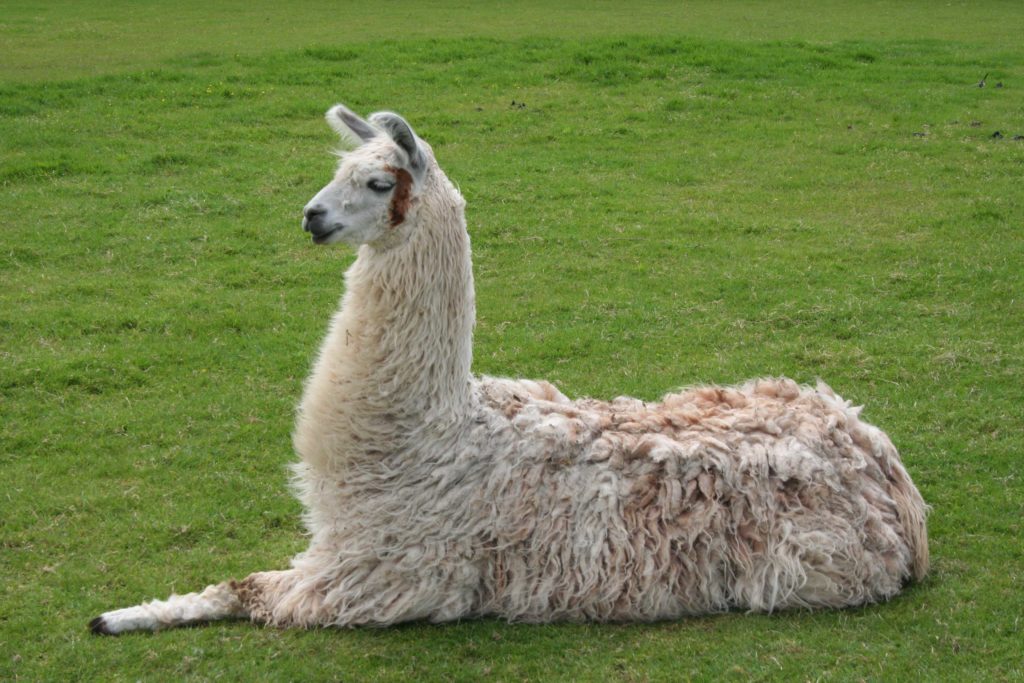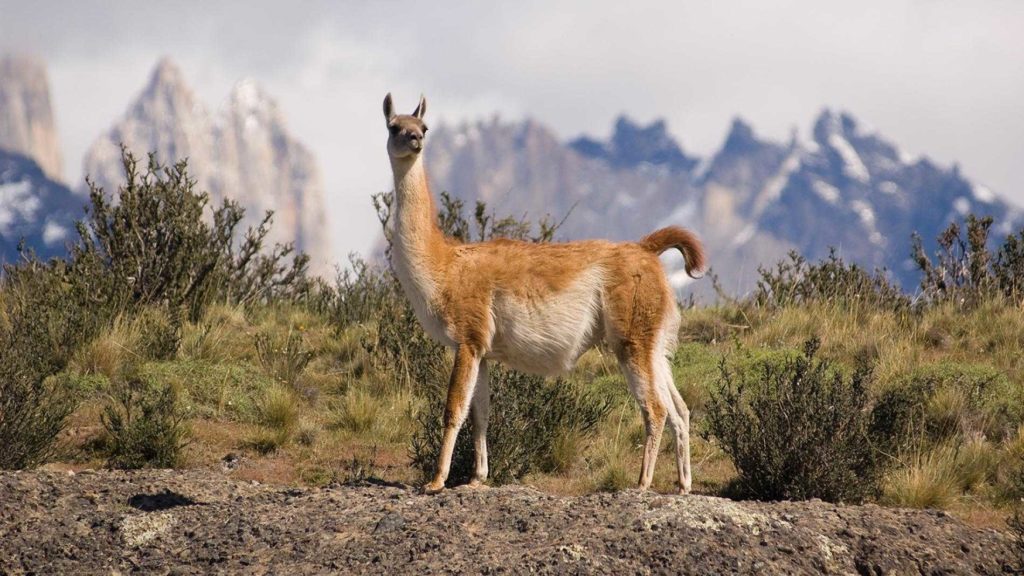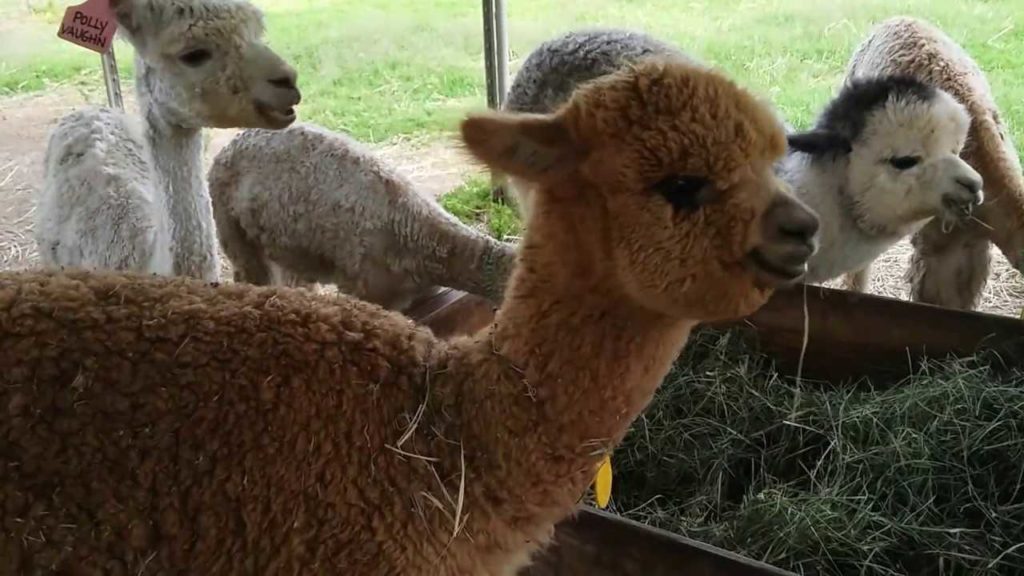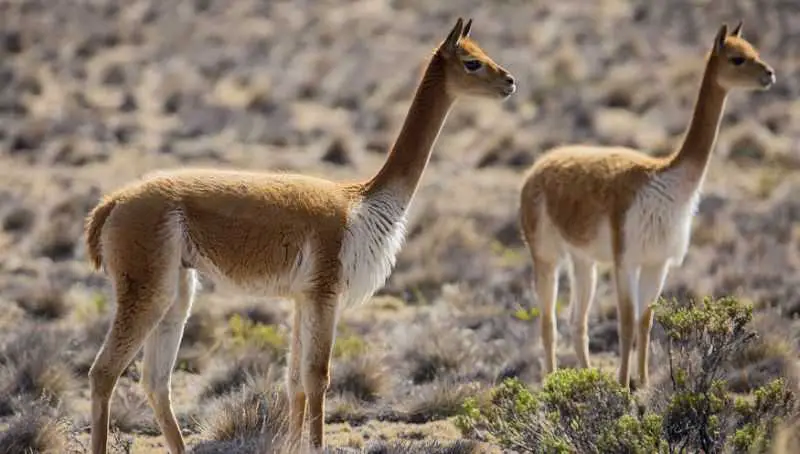Believe it or not, I once had a llama spit on me. It wasn’t one of my best moments (better than being sprayed by a skunk) but it was funny. I went on to learn that it was actually an alpaca that spit on me. There aren’t different types of llamas.
There’s only one, the lama glama. However, there are other camelids that look like llama and are in the same family. So, here’s everything you need to know about these cud chewing, spitting, beautiful animals and their close relatives. A guide to llamas, alpacas, guanacos, and vicuñas
Contents
Llama (Lama Glama)
A full grown llama can reach heights up to 5 feet and 11 inches and weight up to 440 pounds. Despite being able to spit, llamas are friendly animals and would only do so if they are mistreated, feel threatened, or maybe just plain old grumpy and mean.
Llamas are not wild animals. In fact, they are only found as domesticated animals. You can tell llamas apart from the other camelids of South America by their size. For example, guanaco, alpaca, and vicuña (discussed below) are more slender and smaller in size.
Llamas also vary in color. They can be white, brown, grey, and black. They can also be spotted. Vicuña and guanacos only have one color. Llamas have a longe head and neck than alpacas. Their ears are also shaped differently. Llamas have a more banana-shaped ear.
Guanaco (Lama Guanicoe)
Guanoco, unlike llamas, is a wild animal. After llamas, these are the second-tallest camelids in South America. They can grow up to 3 feet and 8 inches in height. A full-grown adult can weigh up to 265 pounds. Guanacos live in herds and can be a single male and his family, all-male herds, or all-female herds with their young.
Guanacos are slender, more so than llamas and alpacas. They have long legs, a long neck, and pointed ears. They resemble vicuña but a guanaco’s head is longer.
Guanacos can be light brown, brownish-yellow, or brownish-red. However, their rumps and the backs of their legs are white. Also, the nape of their neck and their ears, as well as their head is grey in color. These are wild animals which mean, unlike llamas, they do not hesitate to spit at intruders if they feel threatened.
Alpaca (Vicugna Pacos)
Alpacas, like llamas, are domesticated animals. Most adult alpacas grow to 3 feet (not including their head). Males (up to 185 pounds) typically weigh more than the smaller females (up to 150 pounds).
Alpaca wool is one of the finest in the world. It is hypoallergenic, soft, and luxurious. Alpacas look like small llamas rather than the thinner guanaco and vicuña. They often have a “teddy bear”-like face due to fur growing thickly on faces.
Alpacas come in a variety of colors, ranging from white to black with many tints of greys and browns. There are two breeds of alpaca. The huacaya and the suri which both, you guessed it, spit when threatened.
Huayaca Alpaca
Huacaya fur is thick and grows vertically from the body with a natural waviness or crimp.
Suri Alpaca
Suri fur hangs down in long and extremely silky pencil-like “dreadlocks.” These are rather rare as of the 3.7 million alpacas worldwide, less than 10% are thought to be of the suri breed.
Vicuña (Vicugna vicugna)
Vicuñas are the smallest of the group and they grow to about 2 feet and 8 inches in height at the shoulders. They can weigh up to 130 pounds in general. Vicuñas, like guanacos, are wild animals.
It’s the national animal of Peru. These animals are sought after for their wool which is one of the most expensive in the world. Though, there are regulations on how often you can harvest their wool.
Vicuñas are similar in appearance to guanacos. However, they are smaller, more delicate, and have shorter heads. Both have pointed ears and both species share similarly colored fur. That is, their fur is light brown on the back with a white coat on the throat, belly, and legs. And, yes, they can spit.
